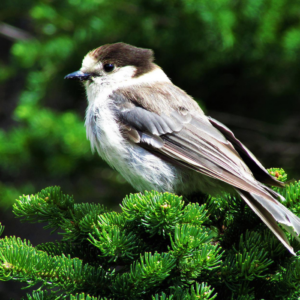The Eastern Kingbird: The Original Angry Bird
Small but mighty, the eastern kingbird could technically be considered a tyrant. It’s Latin name, tyrannus tyrannus, says it all: tyrant, king, despot. And for good reason, too, since this songbird is known for attacking hawks, crows, herons, and other birds that may dare swoop into their territory. They’ve even been known to knock other birds, such as blue jays, out of trees.
When looking for the eastern kingbird, bird watchers should look for lighter black feathers on top of the body and a white underbelly. Their head is a darker black colour, and their tail is tipped with white feathers. If you’re lucky, you’ll be able to see the red, orange, or yellow crest of feathers atop their head, though it’s usually concealed. Altogether, you’ve got attire that’s fit for a king with their suit-like appearance and crown.
The eastern kingbird loves wide-open spaces
Fields, yards, pastures, grasslands, and wetlands are the perfect place for this bird to hunt, mate, and spend their days. They spend their time in the warmer months eating flying insects and keeping to themselves, but once they travel south for the winter, they transform into a much different bird.
Aside from a diet switch made up of primarily berries, these aggressive, almost reclusive birds become social and form flocks of up to 20 birds. As they migrate to South American forests, these flocks can include numbers into the thousands.
The tyrant knows how to make nice
Aside from their mood-boosting trip down South, the eastern kingbird only seems to make nice during mating season. During courtship, the male kingbird will show off with elaborate flight displays, zig-zagging, somersaulting and other acrobatic moves to impress potential mates. This is also when their notorious crown will make an appearance. Monogamous pairs will often pair up year after year and reclaim the same territory together -talk about a power couple.
Throughout most of eastern North America, the eastern kingbird can be found from the Gulf of Mexico north throughout most of central and southern Canada. Some can even be found in eastern British Columbia and the Yukon territories.
Like many others, these birds help keep insect populations down — and for that, we thank them. Though these fierce birds can hold their own quite well, they too can be affected by harmful human activities. That’s why programs such as Bird Friendly City are so important. Learn more about the program here and find ways to make your city bird friendly.



